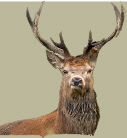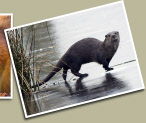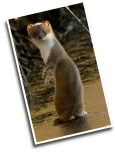






DSLR photography with the Swarovski ATS 80HD and TLS 800
Whilst I use my DSLR lenses for most of my wildlife photography there are times when
the Swarovski gets that little bit closer and if used correctly it can produce excellent
images. Also if you don’t have thousands of pounds to spend on the big professional
500 -
When purchasing the scope we tested it against all the other manufacturers and found the Swarovski to be much brighter (in photographic terms, ‘faster’) and sharper then it’s competitors. The only time when there are some chromatic aberrations are if you take a photograph against a bright white sky, you may see some very fine yellow colour fringing along the edges.
Metering
The first consideration is to ensure that your camera body is able to meter with a manual lens. I originally used the Nikon D200, which worked well but the colours were bland, I have recently replaced this with the Fuji S5 pro and have been very impressed with the image quality. An easy test is to try your camera body with an old manual lens, if it works, so will the Swarovski. All metering and focusing will be manual, the only control you will be able to adjust is the shutter speed, the aperture is pre set by the scope at around F10/11. The setup is heavy so ALWAYS set your shutter speed as fast as possible and ensure that you have everything positioned on a solid tripod like Manfrotto or Gitzo, I currently use the Manfrotto carbon fibre with the lightweight head. Set the camera to use spot metering and aim to underexpose by at least half a stop. I shoot in RAW and compensate for the underexposure later. The depth of field will be very shallow, so you must focus on the eye of the bird or the main point of focus.
Shutter release
If you have enough light for a shutter speed of 1/250 or higher you should be able to work without a cable release. However you will need to manually focus all the images so keep one finger on the shutter and the other on the focus control. If the object is more stable you will need to use a cable release, most modern camera don’t have a screw fit on the shutter sop either make something or use an infra red trigger. Alternatively use the timer control, once set you can press the sutter move away from the camera and allow it to trigger, using the mirror up function will also help to reduce camera shake on slow exposures.
Focusing
All focusing is manual and this may take some practice. When photographing animals or birds always ensure that the eye is the point of focus. The focusing ring on the Swarovski is smooth and easy to use, take time to practice on your garden birds and make sure the diopter adjustment on your camera eyepiece is correctly set.
Setup
To use your DSLR with the Swarovski you will need the TLS 800, this replaces the
eyepiece and contains it’s own set of high quality optics. A camera T-